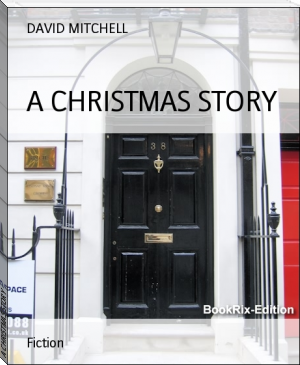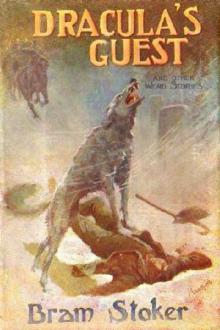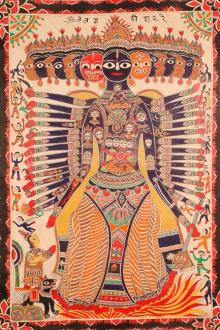The Jewel of Seven Stars, Bram Stoker [books to read for self improvement txt] 📗

- Author: Bram Stoker
- Performer: -
Book online «The Jewel of Seven Stars, Bram Stoker [books to read for self improvement txt] 📗». Author Bram Stoker
existence, present and future, of one who had outrage their theories and
blasphemed their gods. All that she might require, either in the
accomplishment of the resurrection or after it, were contained in that
almost hermetically sealed suite of chambers in the rock. In the great
sarcophagus, which as you know is of a size quite unusual even for
kings, was the mummy of her Familiar, the cat, which from its great size
I take to be a sort of tiger-cat. In the tomb, also in a strong
receptacle, were the canopic jars usually containing those internal
organs which are separately embalmed, but which in this case had no such
contents. So that, I take it, there was in her case a departure in
embalming; and that the organs were restored to the body, each in its
proper place—if, indeed, they had ever been removed. If this surmise be
true, we shall find that the brain of the Queen either was never
extracted in the usual way, or, if so taken out, that it was duly
replaced, instead of being enclosed within the mummy wrappings.
Finally, in the sarcophagus there was the Magic Coffer on which her feet
rested. Mark you also, the care taken in the preservance of her power
to control the elements. According to her belief, the open hand outside
the wrappings controlled the Air, and the strange Jewel Stone with the
shining stars controlled Fire. The symbolism inscribed on the soles of
her feet gave sway over Land and Water. About the Star Stone I shall
tell you later; but whilst we are speaking of the sarcophagus, mark how
she guarded her secret in case of grave-wrecking or intrusion. None
could open her Magic Coffer without the lamps, for we know now that
ordinary light will not be effective. The great lid of the sarcophagus
was not sealed down as usual, because she wished to control the air. But
she hid the lamps, which in structure belong to the Magic Coffer, in a
place where none could find them, except by following the secret
guidance which she had prepared for only the eyes of wisdom. And even
here she had guarded against chance discovery, by preparing a bolt of
death for the unwary discoverer. To do this she had applied the lesson
of the tradition of the avenging guard of the treasures of the pyramid,
built by her great predecessor of the Fourth Dynasty of the throne of
Egypt.
“You have noted, I suppose, how there were, in the case of her tomb,
certain deviations from the usual rules. For instance, the shaft of the
Mummy Pit, which is usually filled up solid with stones and rubbish, was
left open. Why was this? I take it that she had made arrangements for
leaving the tomb when, after her resurrection, she should be a new
woman, with a different personality, and less inured to the hardships
that in her first existence she had suffered. So far as we can judge of
her intent, all things needful for her exit into the world had been
thought of, even to the iron chain, described by Van Huyn, close to the
door in the rock, by which she might be able to lower herself to the
ground. That she expected a long period to elapse was shown in the
choice of material. An ordinary rope would be rendered weaker or unsafe
in process of time, but she imagined, and rightly, that the iron would
endure.
“What her intentions were when once she trod the open earth afresh we do
not know, and we never shall, unless her own dead lips can soften and
speak.”
“Now, as to the Star Jewel! This she manifestly regarded as the
greatest of her treasures. On it she had engraven words which none of
her time dared to speak.
“In the old Egyptian belief it was held that there were words, which, if
used properly—for the method of speaking them was as important as the
words themselves—could command the Lords of the Upper and the Lower
Worlds. The ‘hekau’, or word of power, was all-important in certain
ritual. On the Jewel of Seven Stars, which, as you know, is carved into
the image of a scarab, are graven in hieroglyphic two such hekau, one
above, the other underneath. But you will understand better when you
see it! Wait here! Do not stir!”
As he spoke, he rose and left the room. A great fear for him came over
me; but I was in some strange way relieved when I looked at Margaret.
Whenever there had been any possibility of danger to her father, she had
shown great fear for him; now she was calm and placid. I said nothing,
but waited.
In two or three minutes, Mr. Trelawny returned. He held in his hand a
little golden box. This, as he resumed his seat, he placed before him
on the table. We all leaned forward as he opened it.
On a lining of white satin lay a wondrous ruby of immense size, almost
as big as the top joint of Margaret’s little finger. It was carven—it
could not possibly have been its natural shape, but jewels do not show
the working of the tool—into the shape of a scarab, with its wings
folded, and its legs and feelers pressed back to its sides. Shining
through its wondrous “pigeon’s blood” colour were seven different stars,
each of seven points, in such position that they reproduced exactly the
figure of the Plough. There could be no possible mistake as to this in
the mind of anyone who had ever noted the constellation. On it were
some hieroglyphic figures, cut with the most exquisite precision, as I
could see when it came to my turn to use the magnifying-glass, which Mr.
Trelawny took from his pocket and handed to us.
When we all had seen it fully, Mr. Trelawny turned it over so that it
rested on its back in a cavity made to hold it in the upper half of the
box. The reverse was no less wonderful than the upper, being carved to
resemble the under side of the beetle. It, too, had some hieroglyphic
figures cut on it. Mr. Trelawny resumed his lecture as we all sat with
our heads close to this wonderful jewel:
“As you see, there are two words, one on the top, the other underneath.
The symbols on the top represent a single word, composed of one syllable
prolonged, with its determinatives. You know, all of you, I suppose,
that the Egyptian language was phonetic, and that the hieroglyphic
symbol represented the sound. The first symbol here, the hoe, means
‘mer’, and the two pointed ellipses the prolongation of the final r:
mer-r-r. The sitting figure with the hand to its face is what we call
the ‘determinative’ of ‘thought’; and the roll of papyrus that of
‘abstraction’. Thus we get the word ‘mer’, love, in its abstract,
general, and fullest sense. This is the hekau which can command the
Upper World.”
Margaret’s face was a glory as she said in a deep, low, ringing tone:
“Oh, but it is true. How the old wonder-workers guessed at almighty
Truth!” Then a hot blush swept her face, and her eyes fell. Her father
smiled at her lovingly as he resumed:
“The symbolisation of the word on the reverse is simpler, though the
meaning is more abstruse. The first symbol means ‘men’, ‘abiding’, and
the second, ‘ab’, ‘the heart’. So that we get ‘abiding of heart’, or in
our own language ‘patience’. And this is the hekau to control the Lower
World!”
He closed the box, and motioning us to remain as we were, he went back
to his room to replace the Jewel in the safe. When he had returned and
resumed his seat, he went on:
“That Jewel, with its mystic words, and which Queen Tera held under her
hand in the sarcophagus, was to be an important factor—probably the most
important—in the working out of the act of her resurrection. From the
first I seemed by a sort of instinct to realise this. I kept the Jewel
within my great safe, whence none could extract it; not even Queen Tera
herself with her astral body.”
“Her ‘astral body’? What is that, Father? What does that mean?”
There was a keenness in Margaret’s voice as she asked the question which
surprised me a little; but Trelawny smiled a sort of indulgent parental
smile, which came through his grim solemnity like sunshine through a
rifted cloud, as he spoke:
“The astral body, which is a part of Buddhist belief, long subsequent to
the time I speak of, and which is an accepted fact of modern mysticism,
had its rise in Ancient Egypt; at least, so far as we know. It is that
the gifted individual can at will, quick as thought itself, transfer his
body whithersoever he chooses, by the dissolution and reincarnation of
particles. In the ancient belief there were several parts of a human
being. You may as well know them; so that you will understand matters
relative to them or dependent on them as they occur.
“First there is the ‘Ka’, or ‘Double’, which, as Doctor Budge explains,
may be defined as ‘an abstract individuality of personality’ which was
imbued with all the characteristic attributes of the individual it
represented, and possessed an absolutely independent existence. It was
free to move from place to place on earth at will; and it could enter
into heaven and hold converse with the gods. Then there was the ‘Ba’,
or ‘soul’, which dwelt in the ‘Ka’, and had the power of becoming
corporeal or incorporeal at will; ‘it had both substance and form… .
It had power to leave the tomb …It could revisit the body in the
tomb … and could reincarnate it and hold converse with it.’ Again
there was the ‘Khu’, the ‘spiritual intelligence’, or spirit. It took
the form of ‘a shining, luminous, intangible shape of the body.’…
Then, again, there was the ‘Sekhem’, or ‘power’ of a man, his strength
or vital force personified. These were the ‘Khaibit’, or ‘shadow’, the
‘Ren’, or ‘name’, the ‘Khat’, or ‘physical body’, and ‘Ab’, the ‘heart’,
in which life was seated, went to the full making up of a man.
“Thus you will see, that if this division of functions, spiritual and
bodily, ethereal and corporeal, ideal and actual, be accepted as exact,
there are all the possibilities and capabilities of corporeal
transference, guided always by an unimprisonable will or intelligence.”
As he paused I murmured the lines from Shelley’s “Prometheus Unbound”:
“‘The Magnus Zoroaster … Met his own image walking in the
garden.’”
Mr. Trelawny was not displeased. “Quite so!” he said, in his quiet way.
“Shelley had a better conception of ancient beliefs than any of our
poets.” With a voice changed again he resumed his lecture, for so it
was to some of us:
“There is another belief of the ancient Egyptian which you must bear in
mind; that regarding the ushaptiu figures of Osiris, which were placed
with the dead to its work in the Under World. The enlargement of this
idea came to a belief that it was possible to transmit, by magical
formulae, the soul and qualities of any living creature to a figure made
in its image. This would give a terrible extension of power to one who
held the gift of magic.
“It is from a union of these various beliefs, and their natural
corollaries, that I have come to the conclusion that Queen Tera expected
to be able to effect her own resurrection, when, and where, and how, she





Comments (0)